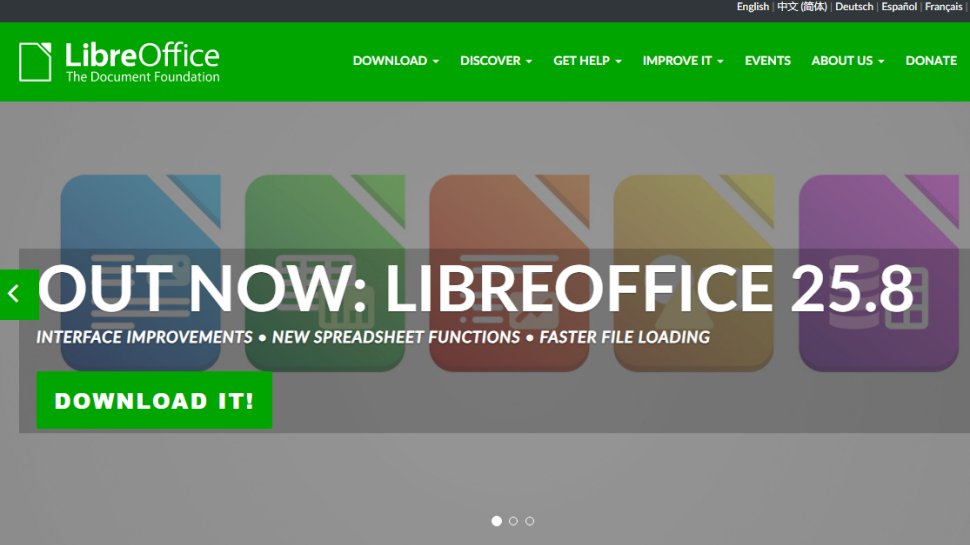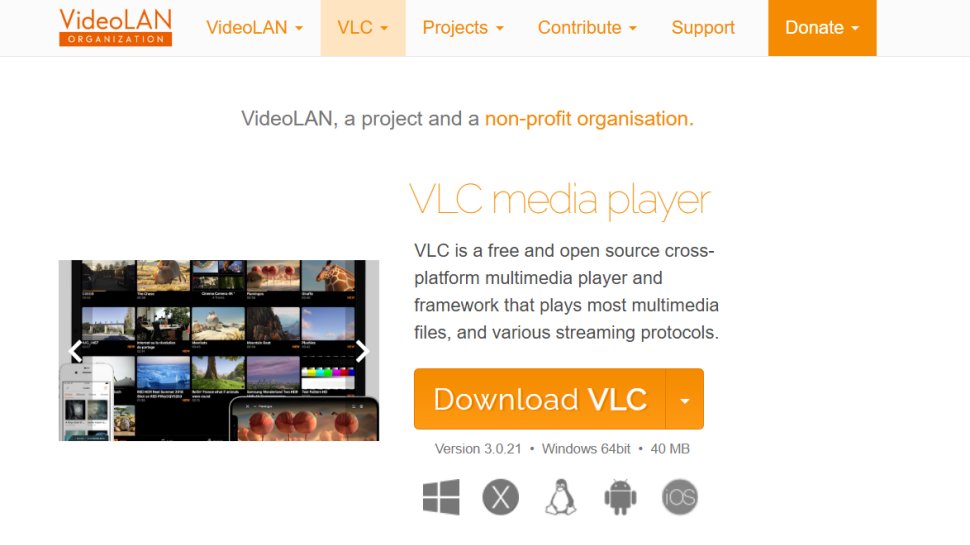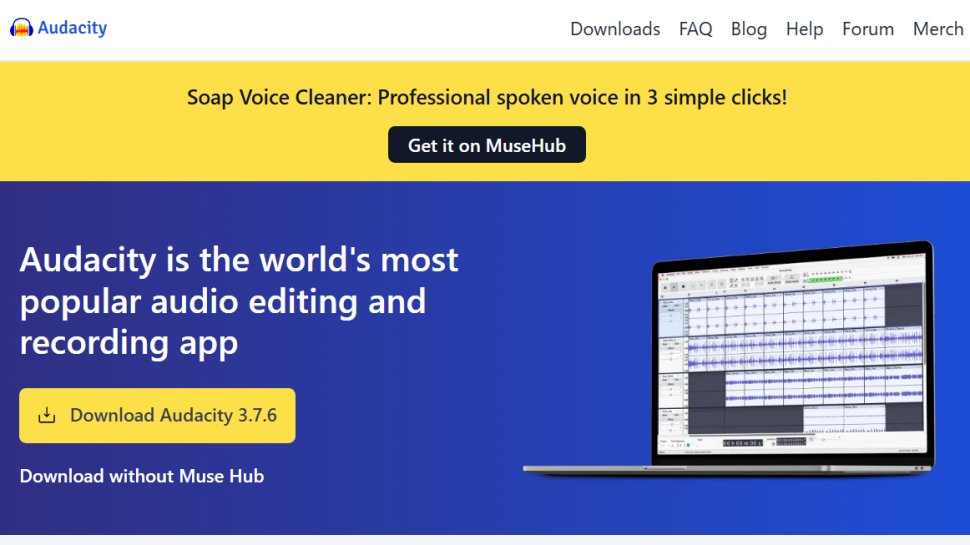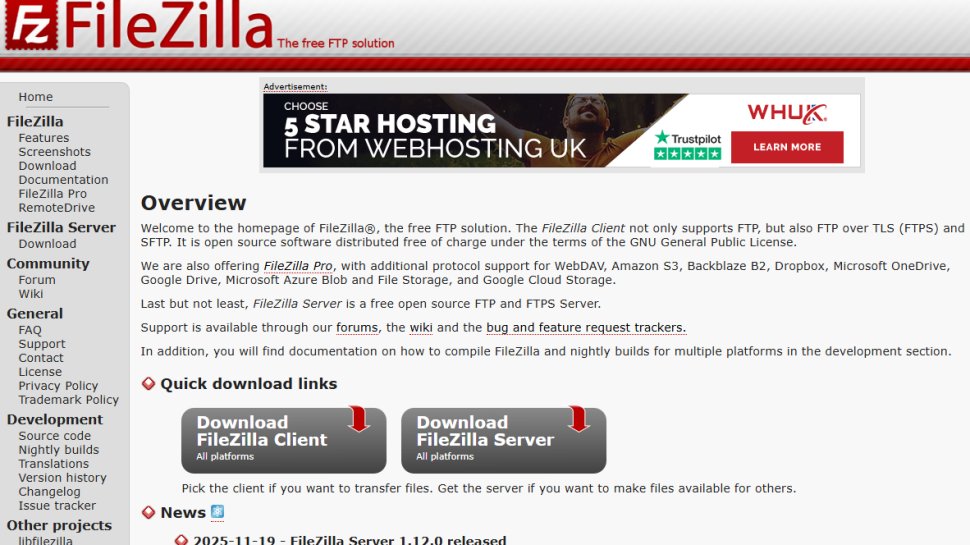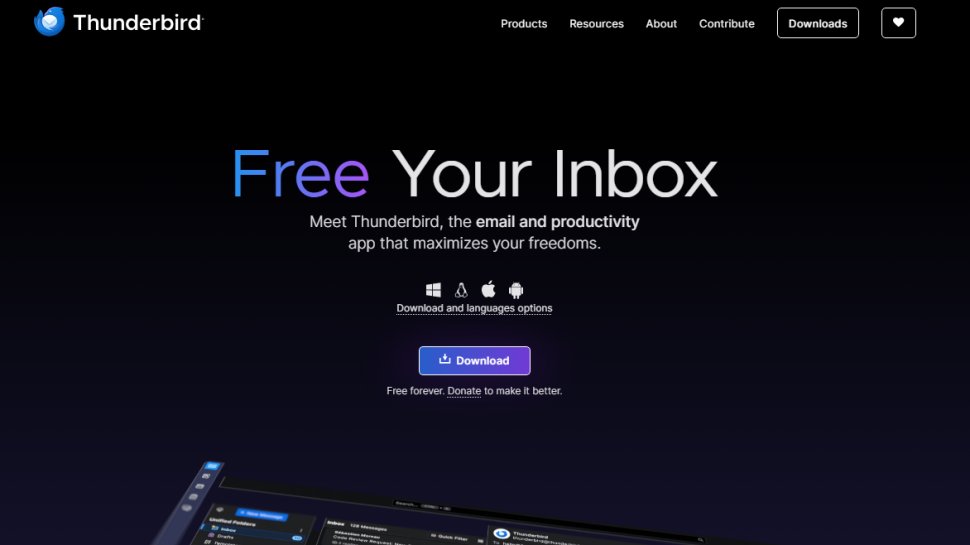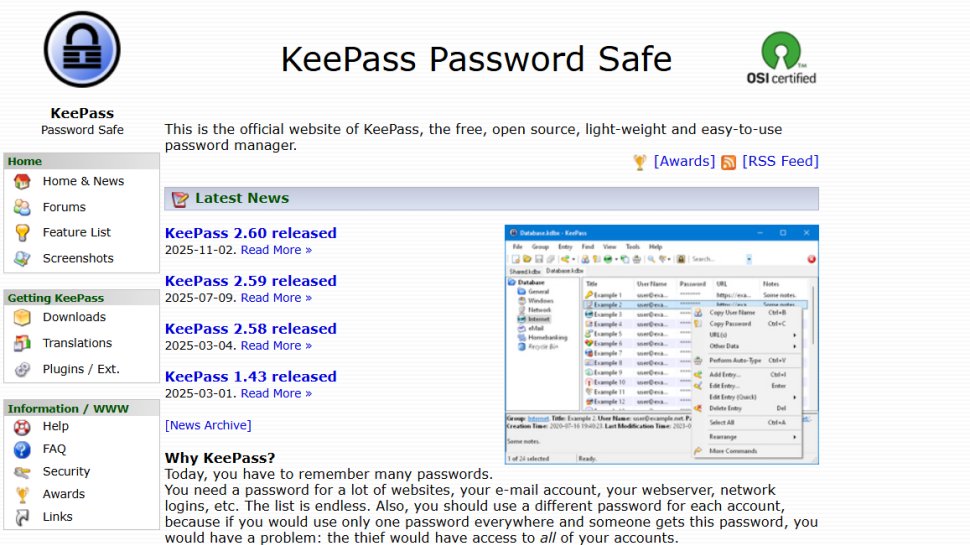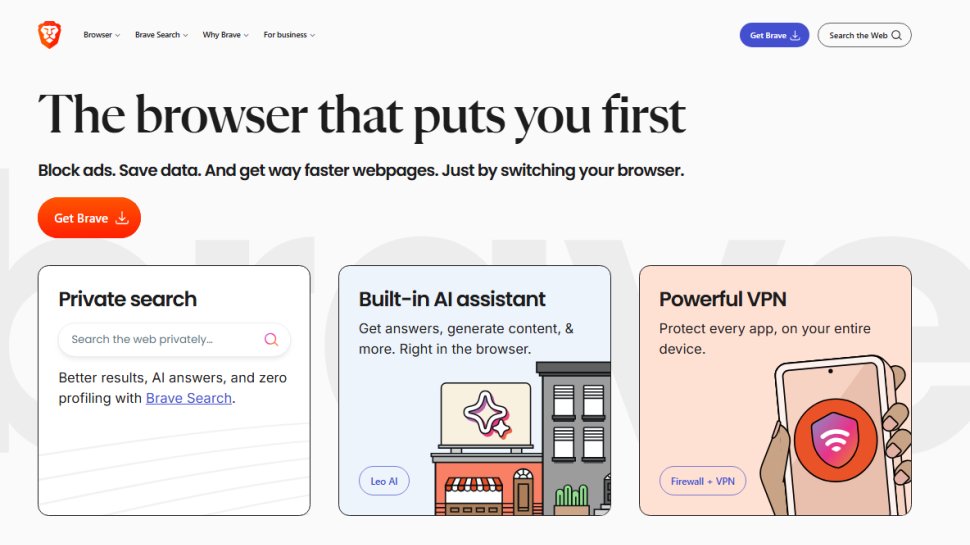Best open source software of 2025
Free, community-supported software for any task

We list the best open source software, to make it simple and easy to install multi-purpose software at no extra cost to you or your business.
Open source software is any kind of program that anyone in the world can download, modify and distribute it without paying fees. It comes in a variety of flavors, from open source CRMs to cloud storage. This is because the developer has specifically chosen to release the source code for free under an open source license.
Since the open source movement took off as a software development philosophy at the end of the 1990s, it’s changed the world. Estimates even suggest that a mind-blowing 96% of all web servers globally are running on some form of open source Linux operating system, for example.
It’s important to remember that open source doesn’t just mean “free”. Lots of companies release their software for free but maintain full copyright ownership of their code, so other developers aren’t able to modify it. By contrast, successful open source initiatives are built on the hard work of potentially thousands of collaborators who have voluntarily given up their time to create something awesome.
Such an accessible development system has some serious advantages. Open source software is often more secure because people from around the world scrutinize new releases and bugs get reported and addressed fast. Also, people are motivated to add cool new features to open source platforms which means open source software is often just as good, if not better, than competing pay-to-use programs.
While open source software is used in everything from networks to web servers, here we'll focus on the best open source software for you to download and run on your desktop or laptop.
We've also featured the best laptop for programming.
The best open source software of 2025 in full:
Why you can trust TechRadar
Best open source software: Best image editor
Specifications
Reasons to buy
Reasons to avoid
Beloved by Linux users since its original release in 1996, GIMP is one of the most famous and best-maintained open source software tools out there. This software is about as close to image editing power and flexibility of the Adobe Photoshop platform as you’re likely to get for free.
GIMP has built-in support for layers, filters, and automatic photo enhancement. It also makes it easy to create new graphic design elements and you can really take things to the next level by downloading plug-ins created by the broader GIMP open source community.
Just like Photoshop, GIMP has a fairly steep learning curve but anyone who puts in a bit of time is sure to appreciate its customizable interface and GPU hardware acceleration. However, if you’re looking for a simple free photo editor, check out Paint.NET instead. It’s not as powerful, but easier to get to grips with.
Read our full GIMP review.
Best open source software: Best office suite
Specifications
Reasons to buy
Reasons to avoid
With support for documents, spreadsheets, databases, presentations, diagrams, and mathematical formulae, LibreOffice is essentially a free version of the world’s most popular office productivity suite, Microsoft 365.
Some would actually argue that LibreOffice is the more fully-featured of the two, thanks to its dedicated developer community which is adding new tools and tricks all the time. For example, in the latest update, LibreOffice added a QR code generator tool so you can quickly create mobile-friendly links.
An alternative well-known open source office tool is Open Office, which offers many similar features to LibreOffice. The reason that LibreOffice has taken the top spot today is that it is much better at preserving Microsoft file formats. In other words, your formatting won’t get screwed up if you need to modify a document originally written in Microsoft Word.
The only downside to this awesome free office software is that editing documents collaboratively online is a bit tricky. Recently, an online editing option has been added but it still requires some technical know-how to implement.
Read our full LibreOffice review.
Best open source software: Best media player
Specifications
Reasons to buy
Reasons to avoid
VLC (or VideoLAN Client) media player is a lightweight application created by an open source development group known as the VideoLAN project. This video and media player has been leading the industry for years in terms of popularity, and it’s not hard to see why. You can use VLC media player to open audio and video files in just about any format without having to hunt down extra codecs.
VLC also works for streaming media such as podcasts and online radio stations. But perhaps the greatest VLC media player feature is playback control. You can change almost everything about how your media is displayed from hardware optimization to adding subtitle files from third-party sources.
Like some of the other amazing open source offerings mentioned here, VLC is constantly being upgraded with new goodies and features to explore. The latest updates to the free video player have included the ability to stream to other devices (like Chromecasts) and 360-degree video support for VR headsets.
Read our full VLC Media Player review.
Best open source software: Best video editor
Specifications
Reasons to buy
Reasons to avoid
Shotcut is open source free video editing software. It’s one of those open source programs that really demonstrates how much a dedicated development community can improve a platform given time. In earlier versions, the Shotcut interface was a little bare, but later releases have added extra dockable panels, an intuitive timeline, and other touches that put Shotcut in the same league as premium video editors like Adobe Premiere Pro.
This video tool supports non-destructive audio and video editing, meaning you can compile effects without any quality loss. You can also use this platform to do color keying and grading operations, as well as more basic clip splicing and trimming.
Perhaps the coolest thing about Shotcut is its ability to work with more or less any format of video, audio, or photo media. That’s largely thanks to FFmpeg, an open source video framework that sits under the hood of the Shotcut program.
Read our full Shotcut review.
Best open source software: Best audio editor
Specifications
Reasons to buy
Reasons to avoid
Even two decades after its original launch date, Audacity remains one of the most widely-used open source applications. It’s a free audio editor that works on Windows, Mac, and Linux systems.
After installing this nifty little package, you’ll find everything you need to record, edit, and enhance sound files. What’s more, thanks to the enormous developer community supporting the program, you can use Audacity’s library of third-party extensions to add any features that aren’t included by default. These will allow you to do everything from adding sound effects to auto-tuning your tracks.
The Audacity interface might look a little complex at first, but given the professional-grade tools available through the program, it’s easy to see why this is the go-to application for musicians and podcast creators.
Read our full Audacity review.
Best open source software: Best FTP client
Specifications
Reasons to buy
Reasons to avoid
FileZilla is a free file transfer protocol (FTP) client that allows you to manage server file systems remotely. If you own your own website, you’ll already know that doing FTP operations through a web client can be a frustrating experience, and FileZilla provides a far more consistent and pleasant FTP experience than you can get with the default FTP applications that most web hosts offer.
This open source FTP tool comes with all sorts of advanced features such as support for large file transfers, synchronized directory browsing, and filename filters. In case you have any trouble getting through to your website’s server, a network configuration wizard is also included.
The FileZilla interface might look a little confusing to first time users, but it’s actually very simple to use. In the left-hand panel, you’ll find a window displaying your local file system. Meanwhile, on the right, you’ll see the file system of your server. To move a file from one to the other, simply drag and drop it.
Read our full FileZilla review.
Best open source software: Best email client
Specifications
Reasons to buy
Reasons to avoid
If you’ve used Microsoft Outlook before, you’ll know all about the benefits of being able to check multiple email inboxes in one place. That’s exactly what Mozilla Thunderbird allows you to do, but with an open source twist. Thunderbird is an email client developed by Mozilla, which you’ve likely heard of thanks to its other famous project, Firefox.
Thunderbird comes with plenty of cool tricks to help you deal with your email more efficiently. You can, for example, link emailed event updates with an inbuilt calendar or check the news with an RSS reader. If you need to send a contact a huge file, Thunderbird will even let you do by uploading it to a separate server and dropping a link into your message.
Read our full Thunderbird review.
Best open source software: Best password manager
Specifications
Reasons to buy
Reasons to avoid
Although it didn't make it as one of our best password manager recommendations, KeePass Password Safe is still worthy of note here thanks to its simple set up and comprehensive feature set. It uses industry-standard (and near unbreakable) AES encryption and two-factor authentication to keep the details of your accounts safe and secure.
KeePass also deserves a mention on this run-down of the best open source platforms due to its portability. Although this open source program can be installed on Windows, Mac, Linux, and mobile devices, you can also store your database and the program on a USB stick for safekeeping.
As if that wasn’t enough, an extensive selection of plug-ins is available for KeePass. You can use these to sync KeePass credential data automatically with your cloud storage service of choice or your browser.
Read our full KeePass review.
Best open source software: Best cloud storage
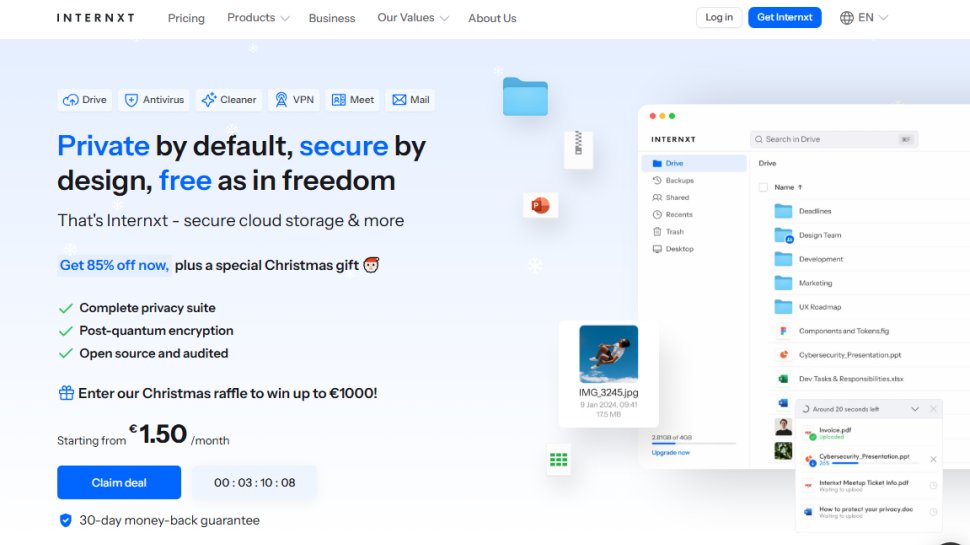
Specifications
Reasons to buy
Reasons to avoid
Internxt is a cloud storage service that focuses on privacy and security, and like everything else on this list, it’s open source. Internxt is available for all major desktop and mobile platforms, and there is a free plan with up to 10GB of storage.
Since it’s available on multiple platforms, the service has automatic syncing which makes sure that all of your information is up to date and saved no matter what device you’re using.
Users can also access their files offline.
Getting started with Internxt is fast and easy, and when you do, you’re greeted with a very intuitive and clean interface on all platforms, as the service is very user-friendly. You can easily view your files and customize your folders with various options. Uploading files is done via drag and drop and you can share your files through a link. All the files uploaded are instantly encrypted on your device.
Chat support is quite responsive and if you wish to contact the support team, you can do so via email 24/7.
The company has several pricing plans for personal users, while business users will have to contact the company for more information. There are three personal plans - 20GB for $1.49 a month, 200GB for $4.99 a month, and 2TB for $10.99 a month.
Read our full Internxt review
Best open source software: Best browser
Specifications
Reasons to buy
Reasons to avoid
Built on top of Google’s open source Chromium project, Brave is a web browser that’s designed to keep your browsing activity private by automatically disabling website trackers and blocking pesky ads. For even more secure browsing, it has a built-in Tor function.
The big advantage of using Brave is that you can access many of the Google Chrome store’s thousands of extensions but enjoy a faster browsing experience than you’d get with a normal Chrome browser. That’s because Brave is less of a resource hog than Google’s regular Chrome package, giving it a performance boost when loading pages.
Another interesting thing about the Brave browser is something called Brave Rewards. The idea behind this feature is that you can opt in to see certain ads and receive a small Basic Attention Token crypto coin in return. Eventually, the developers behind Brave hope this will change the way advertising works on the internet.
Read our full Brave browser review.
Best open source software: Best OS
11 Linux
Specifications
Reasons to buy
Reasons to avoid
Obviously this list couldn’t be wrapped up without mentioning the most iconic open source software around, Linux. First released in 1991, Linux has since morphed into a huge family of different OS distros including desktop variants like Chrome OS (which you'd find on a Chromebook) and Ubuntu, and server stack solutions like LAMP.
Back in the day, Linux was only run by a handful of coders due to the difficulty of installation and the amount of tweaking Linux systems required to run. However, in recent years, the developers behind the best known Linux distros have made a conscious effort to turn them into more user-friendly packages. It’s now easier than ever to run a virtual Linux machine or re-partition your hard drive to add Linux as an extra OS.
Several big-name computer manufacturers have even started selling Linux laptops directly to the public. That’s probably, in part, because Linux uses completely different base code from more popular Windows and Os X systems, making it less of a target for hackers and bad actors online.
Back in the day, users would often be put off Linux because few software manufacturers developed for the system. Fortunately, cloud applications don’t care what kind of local system you’re running, and as these get more popular there’s less reason than ever not to give Linux a go.
Read our guide to the best Linux distros.
We've also featured the best small business apps.
Best open source software FAQs
Which open source software is best for you?
When deciding which open source software to download and use, first consider what your actual needs are, as some platforms may only provide basic options, so if you need to use advanced tools you may find a different platform is much more worthwhile. There are many different open source software options out there, some better than others, but ultimately your choice will be based on whether the open source platform delivers on the tools you actually need, so do ensure you have a good idea of which features you think you may require.
How we tested the best open source software
To test for the best open source software we first set up an account with the relevant software platform, whether as a download or as an online service. We then tested the service to see how the software could be used for different purposes and in different situations. The aim was to push each open source software platform to see how useful its basic tools were and also how easy it was to get to grips with any more advanced tools.
Read how we test, rate, and review products on TechRadar.
Get in touch
- Want to find out about commercial or marketing opportunities? Click here
- Out of date info, errors, complaints or broken links? Give us a nudge
- Got a suggestion for a product or service provider? Message us directly
- You've reached the end of the page. Jump back up to the top ^
Sign up to the TechRadar Pro newsletter to get all the top news, opinion, features and guidance your business needs to succeed!

